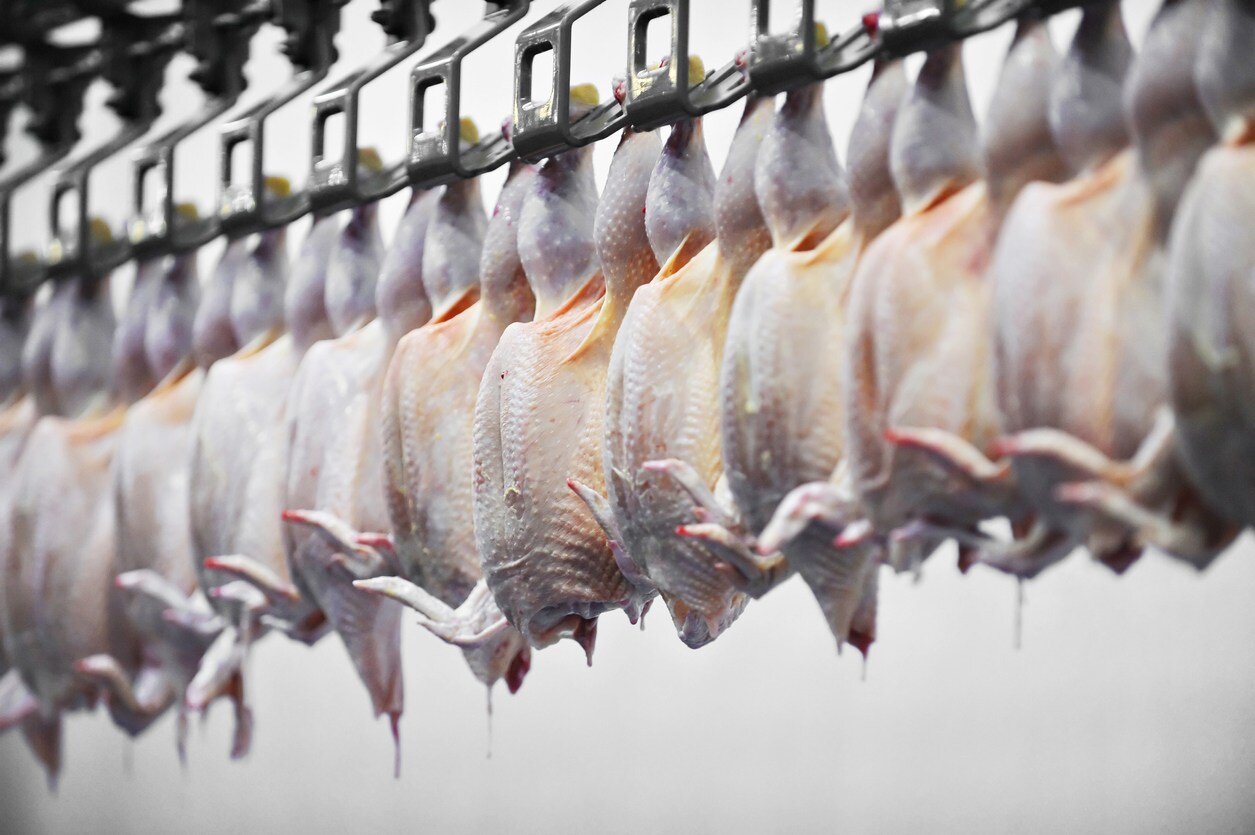USDA Greenlights Contentious Chinese Chicken Imports Following News of Poultry Trade Deal
by Claire Kelloway for Open Markets' Food & Power
Last week, The Wall Street Journal reported that U.S. and Chinese trade officials reached a deal to lift China’s five-year ban on U.S. poultry imports in exchange for the U.S. allowing more Chinese cooked chicken and seafood products.
But it appears the U.S. traded far more than China’s ability to send over chicken nuggets (which, under current standards, must be made from U.S., Canadian, or Chilean chickens). Shortly after trade officials reported the poultry deal, the USDA Food Safety and Inspection Service (FSIS) submitted a final rule permitting China to export chicken to the U.S. from birds raised and slaughtered in China for the first time in the agency’s history. The rule was posted in the Federal Register on Friday.
Industry representatives and analysts claim U.S. poultry producers will benefit from exports to China, but it is not clear if these gains will offset new competition from Chinese poultry. Consumer protection groups meanwhile contend that China’s highly variable food safety standards put U.S. eaters at risk and bemoan trade officials’ apparent sway over food safety policy.
The only clear winners in this grand bargain are multinational meatpackers that can profit from selling the lowest cost poultry, no matter where it came from.
China has long sought permission to export more poultry to the U.S. Some industry professionals have claimed China held a thirteen-year ban on imports of U.S. beef as a lever for opening access to U.S. markets for its poultry producers.
China eventually lifted its ban on U.S. beef during the Obama administration, but analysts contend that U.S. beef still lags in Chinese markets, compared to countries like Australia. Meanwhile, China has banned U.S. poultry imports since an avian flu outbreak in 2015, which the U.S. claims is no longer a valid risk.
Two weeks ago, Chinese trade officials signaled they will lift their U.S. poultry ban. Less than a week later on November 1st, the FSIS submitted a final rule that says Chinese slaughter and processing systems meet U.S. food safety standards, allowing China to sell birds that it raised and slaughtered to the U.S. FSIS originally proposed this rule in 2017.
Critics like Tony Corbo, a senior lobbyist for Food & Water Watch, argue that the close timing of the rule’s finalization and news of a poultry trade deal show that “the trade people are the ones dictating food safety policy at USDA.”
Even though the USDA determined that Chinese poultry systems are equivalent to the U.S., advocates argue that Chinese poultry imports still pose serious risks to consumers and public health. China has a history of food scandals, from rat meat sold as lamb, baby formula tainted with melamine, and perhaps most relevant, chicken jerky treats that killed over 600 dogs in the U.S. and sickened thousands more. While the Chinese government improved food safety regulations in 2015, advocates like the Consumers Union said, “There is strong reason to believe that enforcement of [Chinese food safety] laws is not effective,” in a comment to USDA opposing the proposed rule.
The Consumer Federation of America, Food & Water Watch, and the Center for Foodborne Illness Research & Prevention also submitted letters opposing the rule, citing issues with USDA’s limited audit site selection and China’s use of antibiotics on poultry farms, among others.
Meanwhile, meat trade associations like the National Pork Producers Council and the North American Meat Institute submitted comments supporting USDA’s decision to accept poultry raised and slaughtered in China. Large packers stand to gain both from more poultry exports to China, but also from the opportunity to shift poultry raising and processing overseas. “They’re not paying those Chinese workers $13 to $14 an hour to work in those plants,” Corbo says.
One U.S.-based multinational meatpacker, Cargill, owns one of the four Chinese poultry processing facilities already approved by USDA to export cooked chicken. Cargill also has a chicken slaughter plant with the capacity to process 225 birds per minute, or approximately 65 million chickens per year, that the Chinese government has pre-approved to process chicken for U.S. export, according to a USDA audit report. U.S. plants can only run at a maximum of 175 birds per minute, which experts already say is hazardous for workers. FSIS states that Chinese plants must operate at USDA approved speeds when producing poultry for U.S. export.
Cargill did not respond to a request for comment. Tyson Foods also has poultry processing plants in China, though none currently approved for export to the U.S.
Currently, 99 percent of chicken consumed in the U.S. is raised in the U.S. But should Chinese chicken become price competitive with domestic products, American poultry farmers could feel squeezed in the same way American beef farmers face increased pressure from beef imports.
Industry groups dismiss the threat. “The United States is the largest and most efficient poultry producer in the world,” says Tom Super, a spokesperson for the National Chicken Council. “It’s difficult for any country to compete domestically in the United States.”
But some farmers disagree. Jon Buttram, a former poultry producer of 40 years and the President of the Alabama Contract Poultry Growers Association, says this deal is “horrible for the farmers and it’s horrible for the consumers.”
Buttram argues that the risks of this trade deal outweigh the supposed benefits to poultry farmers because any wealth from increased U.S. poultry exports to China will largely stay with powerful packers. “That trickle-down economics doesn’t trickle down past the integrators, they pocket all that money and don’t pass it along,” says Buttram.

